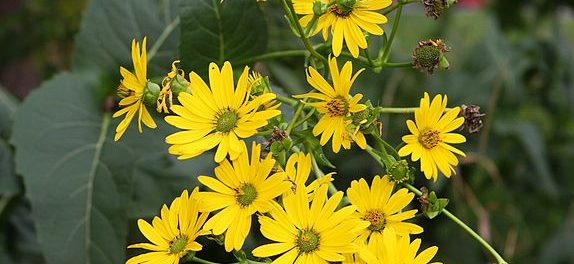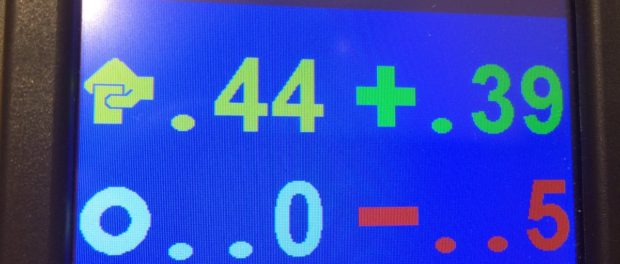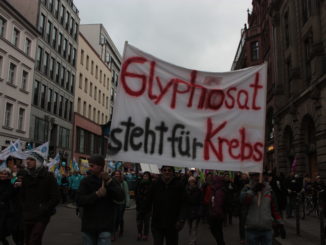Though it has gone somewhat under-reported, what amounts to a mini CAP reform has just passed a crucial stage towards becoming law. There is but a single plenary (all MEPs) vote in the Parliament remaining, most likely in December. So what was agreed and what does it mean?
NEW: Full consolidated text of the Omnibus (28th November)
Though it has gone somewhat under-reported, what amounts to a mini CAP reform has just passed a crucial stage towards becoming law. The “Omnibus” regulation – the agricultural part of the proposal on the financial rules applicable to the general budget of the Union – was voted on Wednesday morning by the European Parliament’s Agriculture Committee, 44 for and 5 against. So what was agreed and what does it mean?
What Just Happened?
The “Omnibus” regulation – the agricultural part of the proposal on the financial rules applicable to the general budget of the European Union – was voted on Wednesday morning by the European Parliament’s Agriculture and Rural Development Committee. The vote went 44 for and 5 against. This follows on from what was provisionally agreed on October 12th by Parliament and Council negotiators, and what was endorsed last week by the Council’s Special Committee on Agriculture.
Read our coverage of the Omnibus as agreed on October 12th
The agreed text now needs to be confirmed by the Parliament as a whole, probably during its 11 – 14 December plenary session in Strasbourg, and by the Council. It will then enter into force in early 2018.
This Regulation is about what is called simplification in the areas of direct payments, rural development, common market organisation and horizontal regulation. Press information provided by the European Parliament highlights the following areas:
- simpler and more flexible EU’s farming policy rules
- stronger farmers in the food supply chain
- better tools to deal with production and market risks
Much was also made of the increase in the number of sectors that producer organisations can negotiate price in, the scope of these new market tools on income stabilisation to deal with risk, and on flexibility for active and young farmers.
When it comes to simplification of the CAP however, things are not necessarily that simple. Below we unpack what this Omnibus really means.
What Really Happened?
Bulldozer Diplomacy
Way beyond the scope of a mere simplification, a small number of bullish MEPs have in fact managed to introduce a range of claw backs (reversals) on the tiny progress made on making the CAP greener and fairer. Sources ARC have communicated with have expressed anger at the size of the changes, the lack of need for many of them, and the negative impacts they will have. It was even claimed that changes in the basic legislation has been introduced based on the preferences of individual Member States, small sectors, or even – incredibly – individual farmers. In some cases, there was already legislation available to solve these small problems, which Member States for some reason have not been using.
The process involved little or no impact assessment, consultation or negotiation, and also little if any input into from other non-agri committees.
Inevitably, this level of messing with the basic rules does the exact opposite of making things simple. Moreover, the logic of doing this two years before _another_ reform – in the name of supposed simplification – is impossible to see.
Rural Development Regulation
Non-indigenous breeds and varieties such as Miscanthus and Silvia have been introduced into the rare breeds and varieties schemes, which will weaken it, while reducing the money available in rural development (RD) generally.
Risk management and insurance: if this passes at WTO level, it represents a loss of RD money for infrastructure, rural communities and necessary changes, and instead more deeply integrates the banking and financing sectors into controlling positions in farming.
Direct payments regulation

More greening exemption limits have been introduced. This means that there are yet more ways to avoid having to do any of the supposedly compulsory greening measures. For example, an exemption existed for grassland farms with 25% arable land: if the arable land totaled less than 30 hectares, they did not have to carry out greening measures on this. Now even if the arable land makes up more than 30 hectares, no greening is required. This will, in effect, increase maize monocultures in Central Europe.
Ecological Focus Areas (EFAs) have been weakened in numerous areas. Perhaps still smarting from a recent rare loss which banned the use of pesticides in EFAs, a number of rule changes have been introduced at this Agricultural Committee Stage. These will weaken the ecological and even ecosystem services components of EFAs.
Rice, Elephant grass (Miscanthus) and Cup plant (Silphium perfoliatum) have all been added as crops that can be grown in EFAs. What’s more, the weighting given to these, along with other changes in weighting, further reduces the scope for beneficial plants and practices in EFAs.
Miscanthus is to be weighted at 0.7 (higher than short rotation coppice, though this was also increased to 0.5 from 0.3); Cup plant is also to be weighted at 0.7. None of these have high biodiversity value, when compared to other EFA options, so their introduction and/or improved weighting simply reduces the overall % area other measures have.
Melliferous flowers were added to the list of EFA crops allowed, but with a weighting factor which is too high, at 1.5 . This will encourage the monoculturisation of EFAs, and may have the unintended impact of, via spreading outside of the EFA, increasing the use of herbicide straying on the land and roadsides in general.
Its not exclusively bad news in EFAs, however. One rare positive comes with the increased weighting for Nitrogen fixing crops, from 0.7 to 1. This is _only_ a positive because pesticides have very recently been banned from EFAs.
The Commission has also promised a protein strategy, but no action has been seen as of yet (apart from spurious arguments some months back to keep pesticides in EFAs to protect these protein crops in EFAs, as if this 5% area was ever part of the protein strategy, or, moreover, could make significant inroads into the EU protein deficit!)
These is a slight change in how permanent pasture is defined, which may help farmers with rough grazing in upland areas, and by extension, may help maintain biodiversity in upland areas too. This is however left as a Member State optional, and could still be underpaid compared to lowland grazing.
Omnibus Agreed, Concerns Expressed Over Procedures & Content
Parliament Votes to Ban Pesticides from Ecological Focus Areas







Hi Laurent, I think the issue is that miscanthus is not that much of a tool in the specific EFA context. EFAs are supposed to be the gold standard for biodiversity.
So sth that’s good for biodiversity isn’t enough actually.
Moreover, the weighting should reflect this.
Sad to read once again the false argument that miscanthus is no tool for biodiversity. Miscanthus and SRC provide shelter to birds and mammals. Combined with appropriate strips (flower, food), it can contribute to a sustainable biodiversity gain in the countryside by fragmenting large surfaces of monocultures.